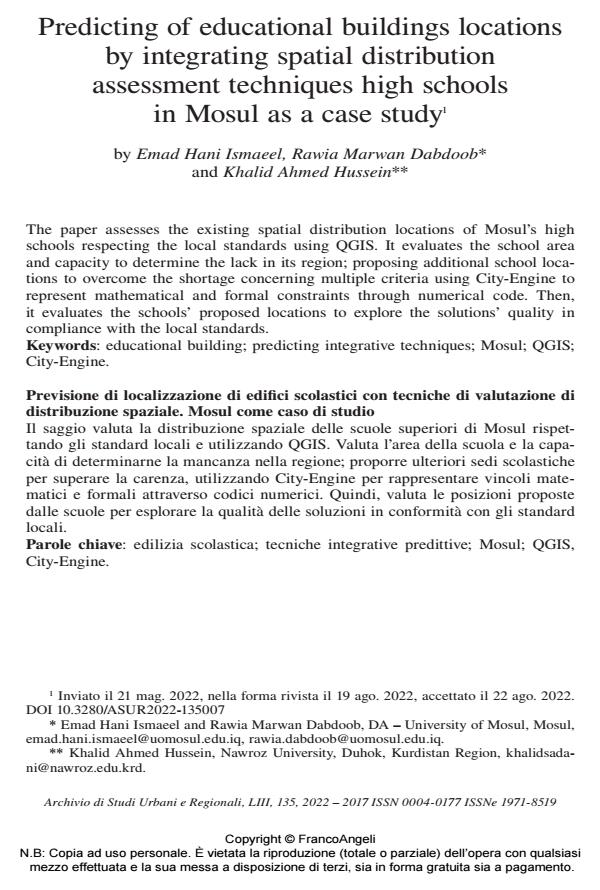Predicting of educational buildings locations by integrating spatial distribution assessment techniques high schools in Mosul as a case study1
Journal title ARCHIVIO DI STUDI URBANI E REGIONALI
Author/s Emad Hani Ismaeel, Rawia Marwan Dabdoob, Khalid Ahmed Hussein
Publishing Year 2023 Issue 2022/135
Language English Pages 25 P. 135-159 File size 833 KB
DOI 10.3280/ASUR2022-135007
DOI is like a bar code for intellectual property: to have more infomation
click here
Below, you can see the article first page
If you want to buy this article in PDF format, you can do it, following the instructions to buy download credits

FrancoAngeli is member of Publishers International Linking Association, Inc (PILA), a not-for-profit association which run the CrossRef service enabling links to and from online scholarly content.
The paper assesses the existing spatial distribution locations of Mosul’s high schools respecting the local standards using QGIS. It evaluates the school area and capacity to determine the lack in its region; proposing additional school loca- tions to overcome the shortage concerning multiple criteria using City-Engine to represent mathematical and formal constraints through numerical code. Then, it evaluates the schools’ proposed locations to explore the solutions’ quality in compliance with the local standards.
Keywords: educational building; predicting integrative techniques; Mosul; QGIS; City-Engine.
Emad Hani Ismaeel, Rawia Marwan Dabdoob, Khalid Ahmed Hussein, Predicting of educational buildings locations by integrating spatial distribution assessment techniques high schools in Mosul as a case study1 in "ARCHIVIO DI STUDI URBANI E REGIONALI" 135/2022, pp 135-159, DOI: 10.3280/ASUR2022-135007